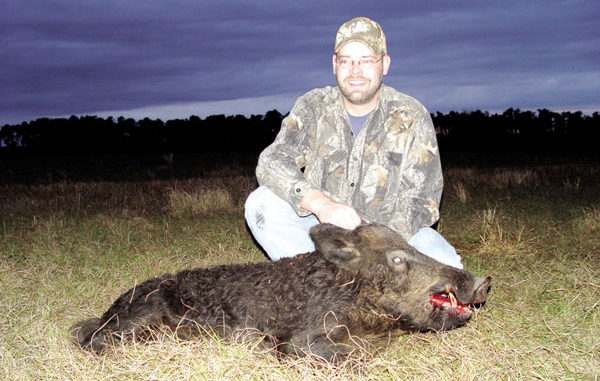
Early season is prime time to bring home a buck and some bacon.
As the Aug. 15 opening of the Lowcountry deer season approaches, it’s not surprising that a lot of hunters go hog wild getting ready for those first few days in the tree stand.
Of course, there are more reasons to go “hog wild” than just bucks in velvet. Like, for instance, real hogs.
The opportunity to take a buck and a hog on the same hunt is probably never better than in the first month of the season, before either species gets wise to the ramblings of hunters in their woods, fields and swamps.
At least that’s the opinion of three hunters who take care of landholdings that are full of deer and porkers.
“August and September are the best times to kill hogs,” said Troy Sullivan, who manages the 1,800-acre Patriot’s Plantation in Williamsburg County. “Hogs don’t like pressure. As deer season progresses and you’re killing a lot of deer and hogs, the hogs will move out of an area.”
Sullivan, Don Houck and Heath Rayfield all oversee big pieces of property across the state that are loaded with deer and hogs. Houck, a real-estate developer, manages the hunting on a 16,000-acre lease made up of the Creek and Belfast plantations in Allendale County. Rayfield manages the Buchanan Shoals Sportsman’s Preserve, which has around 6,000 acres on the Pee Dee River — 1,000 in Chesterfield County and 5,000 across the border in North Carolina.
In approximately half of the Palmetto State, hunters can start targeting deer on Aug. 15. In the 12 Lowcountry counties of Game Zone 6 and the three counties in Game Zone 3 — Aiken, Lexington and Richland — it’s buck-only gun season. In the six counties in Game Zone 5, archery season runs Aug. 15-31, with gun season opening Sept. 1. In the seven northeastern counties that make up Game Zone 4, archery season opens Sept. 1 for two weeks, followed by gun season. Archery season runs Sept. 15-30 in Game Zone 2, which includes much of the Upstate. Only in the extreme northwestern mountains of Game Zone 1 do deer hunters have to wait until Oct. 1.
South Carolina does not have a closed season on wild hogs.
Houck said that he’s got a number of club members “who’d just as soon shoot a hog as a deer,” and early in the season, he said that’s a fairly easy deal to set up. He simply heads into the 6,000 acres of Savannah River swamp his club controls and looks for sign.
“Hogs are moving all the time, but basically, you can find areas they’re using,” Houck said. “You scout and find rubs and wallows, maybe a peanut field they’re using. If you find a place they’re using, you feed corn, and the hogs will find it and use it like crazy. If you put out enough corn, you can keep them there, but when I say enough corn, I mean four or five sacks. If you put out one sack, it will be gone in a day.”
Houck will set a hunter up in an area where he’s feeding corn, and he’ll almost guarantee a shot at a hog within a day or two — and possibly a shot at a deer, too.
“Hogs like the same type of bedding cover that deer do — the thicker the better,” he said. “You’ll have more opportunities for deer if you hunt up on the hill, out of the swamp. The hogs might come up on the hill; they’ll move from hardwood patch to hardwood patch, but you’ll have more opportunities for hogs in the swamp, if that’s your preference.
“If you’ve got a feeder out, and the hogs find the corn, the smaller pigs especially may bed down right next to it and get up when they hear the feeder go off.”
Rayfield puts his hog hunters as close to water as he can, either in the swamps along the Pee Dee River or along creek runs and areas he says “stay wet all the time.
“We’re hunting hogs on lanes we cut out or on roadbeds,” said Rayfield, whose preserve is private except for hog hunts, quail hunts and catfishing trips. “The majority are on lanes we cut out. You put a feeder in the middle of the lane and a stand on one end. It doesn’t take hogs very long to find the corn. If you put it out, they’ll be on it within two days. Usually, three days before I’ve got somebody hunting hogs, I’ll start putting out corn.”
The best time to kill a hog is, like deer, the last 30 minutes before dark. Hogs feed all night, but they’ll start just before dark and end just after daylight. They’ll bed down for much of the day, except on cold days, when they tend to wander around more.
“They’ll stay in the swamp until nightfall, and then, they’ll go everywhere,” said Sullivan, whose property has a mile of frontage on the Lynches River and six miles on one of its tributaries, Clarks Creek. “They’ll roam anywhere at night, but you kill ’em just before dark when they come to the food. On a good night, you can kill three or four. Last year, we killed 125 in seven months. The good thing is, you can hunt them all year.”
Houck said that hunters can stalk and walk up hogs during daylight hours if they are able to identify bedding areas. It’s a matter of coming in downwind, making a nice sneak and busting pigs as they break out of cover.
“They’re not as stupid as a lot of people think,” he said. “They don’t see very well, but they’ve got a great sense of smell. And once you start pounding on ’em a little bit, they’re like deer — they’re gonna move. That’s why you get ’em real good the first few times you hunt ’em; they haven’t had any pressure on ’em.”
Food plots are another place to find hogs. Corn and chufas are two food-plot crops that are about as good a guarantee as anything to attract them.
“We’ve been planting 40 acres of corn every year, but last year, we planted those 40 acres four times and never got an ear. The hogs would go right down the rows and dig up the seeds,” Sullivan said. “They’ll destroy chufa; it will look like the craters on the moon.”
Houck agreed.
“If hogs find a chufa patch, they’ll leave you with some hills that you can’t get a tractor over,” he said.
Hunters targeting deer specifically might wind up in totally different places from those who want a hog or wouldn’t pass up the chance to pull the trigger if one shows up.
Rayfield said a great early-season spot at Buchanan Shoals would be one with a primary food source and a water source close by — but not necessarily down in the bottomland.
“We have little ponds, just little wet spots really, that are back in the woods, and we like to hunt close to them,” he said. “The deer will come to them. As hot as it is the first of September, they’ve got to have something to drink.
“It can be tough to kill a big buck early in the year, but what I’ve figured out is that if I can get as close to his bedding area as I can, and find food and water, when he gets up, he’ll go to his water first, then his food source.
“I like to put up a trail camera on a food plot or a trail leading to one, but I don’t like to hunt right there. I just want to get an idea of what’s coming in there so I can pattern them. Last year, I had 17 bucks coming to this one clover patch, including three good bucks. I backed off about 100 yards toward their bedding area, and on the third day of the season, when the wind was finally right, I hunted, and five of the bucks I’d seen came in, including the three shooters, and I killed one them, a big 9(-pointer).”
Sullivan said he tends to put hunters who are interested specifically in deer in areas up, away from the swampy bottomland. And he tends to rely on food plots with certain kinds of offerings.
“Hogs will come into the same places as deer to feed, and hogs will eat all the food before the deer have a chance to feed. That’s why some of your food plots can be the best places for deer. They like grains more — oats and other fall crops — and hogs won’t bother them as much. The other thing we’ve found that’s good for food plots is sorghum. You can drill it in, and the hogs don’t seem to bother it.”

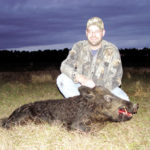
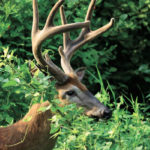
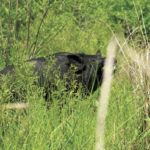
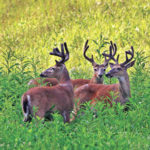
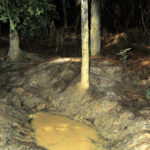



Be the first to comment